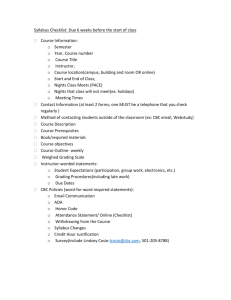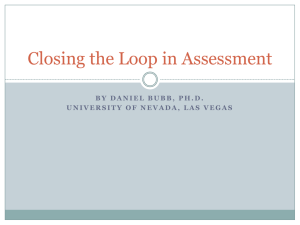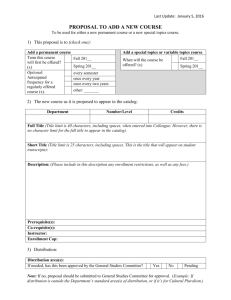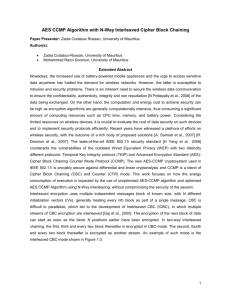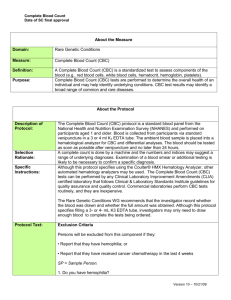template - Coastal Bend College
advertisement
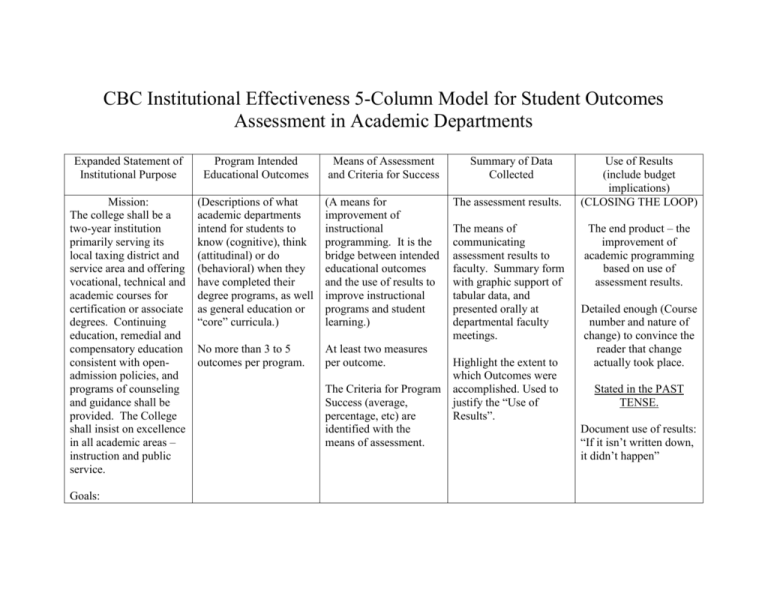
CBC Institutional Effectiveness 5-Column Model for Student Outcomes Assessment in Academic Departments Expanded Statement of Institutional Purpose Program Intended Educational Outcomes Means of Assessment and Criteria for Success Mission: The college shall be a two-year institution primarily serving its local taxing district and service area and offering vocational, technical and academic courses for certification or associate degrees. Continuing education, remedial and compensatory education consistent with openadmission policies, and programs of counseling and guidance shall be provided. The College shall insist on excellence in all academic areas – instruction and public service. (Descriptions of what academic departments intend for students to know (cognitive), think (attitudinal) or do (behavioral) when they have completed their degree programs, as well as general education or “core” curricula.) (A means for improvement of instructional programming. It is the bridge between intended educational outcomes and the use of results to improve instructional programs and student learning.) No more than 3 to 5 outcomes per program. At least two measures per outcome. Goals: The Criteria for Program Success (average, percentage, etc) are identified with the means of assessment. Summary of Data Collected The assessment results. The means of communicating assessment results to faculty. Summary form with graphic support of tabular data, and presented orally at departmental faculty meetings. Highlight the extent to which Outcomes were accomplished. Used to justify the “Use of Results”. Use of Results (include budget implications) (CLOSING THE LOOP) The end product – the improvement of academic programming based on use of assessment results. Detailed enough (Course number and nature of change) to convince the reader that change actually took place. Stated in the PAST TENSE. Document use of results: “If it isn’t written down, it didn’t happen” CBC Institutional Effectiveness 5-Column Model for Administrative and Educational Support Units (AES) Institutional Mission/Goals Reference Goal Reference: Unit director determines what portions of the college’s mission and goal statements the unit supports. Unit Mission Statement: Describes the purpose of the unit. Brief in Length. Provides linkage to and support of ESIP, as well as providing the linkage for statements of administrative objectives by the AES unit. Known by employees within the unit who participated in its formulation Administrative Objectives Means of Assessment and Criteria for Success Should be: a. Linked to the unit mission statement b. Realistic c. Limited in number d. Measurable “When” will assessment take place? “Where” to find info that will reflect accomplishment of objectives? “How” will assessment be accomplished? “How well” should the unit perform on the means of assessment if the unit is functioning properly? No more than 3 to 5 objectives per unit. Can be: Outcome statements Process statements Satisfaction statements Criteria for Success: “We will know we are successful when…..” At least two measures per outcome. Summary of Data Collected The assessment results. Results should summarize the key findings of whatever means of assessment were identified, and should relate directly to the administrative objectives they were designed to measure. Use of Results (Include budget implications) (CLOSING THE LOOP) The end product – the improvement of services. Department head distributes results summary and then schedules staff meeting to identify the nature of any necessary changes and to applaud staff achievements. Document use of results: “If it isn’t written down, it didn’t happen”


